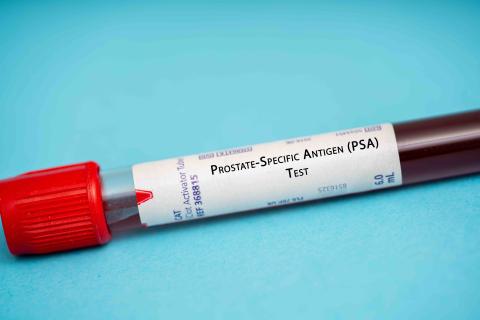Prostate cancer data over the past 40 years suggest overdiagnosis
A study has analyzed data on prostate cancer incidence and mortality in 26 countries in Europe between 1980 and 2020. Its findings are that new diagnoses have increased due to the widespread use of PSA [prostate-specific antigen] testing, but mortality rates have not benefited in parallel. This suggests possible overdiagnosis, i.e., the detection of harmless tumors that are unlikely to cause symptoms or death in the patient's lifetime. The results are published in the journal The BMJ.

Luján - Próstata
Marcos Luján Galán
Head of the Urology Unit at the Infanta Cristina Hospital, researcher in the Spanish branch of the European Randomized Study of Screening for Prostate Cancer
The study is of good quality and is in line with the evidence already known.
Mass screening for prostate cancer with PSA only produces changes in the incidence of the disease, little or no change in prostate cancer mortality and has no effect on all-cause mortality (overall mortality), since it does not add life expectancy.
The future of screening is now to include tests that reduce overdiagnosis, such as the use of magnetic resonance imaging (although its feasibility in terms of cost may be a limitation). Studies that validate screening strategies in prostate cancer require a long follow-up time (e.g. >10 years), so it will take time to see results (if they occur).
Gragera -Próstata (EN)
Rafael Marcos Gragera
Epidemiologist at the Catalan Institute of Oncology and professor of medicine at the University of Girona
This is an ecologically designed study that analyzes prostate cancer incidence rates using consolidated data from population-based cancer registries published in the Cancer Incidence in Five Continents and mortality data provided by WHO. The approach of the study and the quality of the data used position it as a robust and well-supported analysis.
The study highlights a dramatic increase in prostate cancer cases in Europe since 1980, with variations between countries, mainly attributed to the widespread use of PSA testing. However, this increase in diagnoses has not been accompanied by a commensurate increase in mortality, suggesting that many of the cancers detected may be harmless and would not have impacted patients' lives had they not been diagnosed, indicating possible overdiagnosis. This overdiagnosis carries risks such as unnecessary treatments, impaired quality of life, and inefficient use of healthcare resources.
These findings are in line with recent studies in Spain that document an increase in the incidence of prostate cancer until 2003, followed by a decrease attributed to the reduction in opportunistic PSA determination. In addition, a progressive decrease in mortality and an increase in survival rates between 1994 and 2018 is observed.
This analysis is particularly relevant for the possible implementation of population-based prostate cancer screening programs. If their introduction is considered in the future, such programs should be carefully designed to minimize and monitor the adverse effects of overdiagnosis in the population.
The limitations of the study are those discussed by the authors and are inherent to ecologically designed studies.
Páez - Prótata OMS (EN)
Álvaro Páez Borda
Head of Urology Service, Hospital Universitario de Fuenlabrada, Madrid; Associate Professor of Health Sciences, Universidad Rey Juan Carlos; and Chairman of the Spanish branch of the European Randomized Study of Screening for Prostate Cancer
The study-a retrospective study of PSA utilization and prostate cancer (PC) incidence and mortality-addresses the perennial issue of overdiagnosis in the context of PC screening. That undesirable effect-that of overdiagnosis, and consequent overtreatment-historically represents the biggest mortgage for PC screening. And it is the reason why a preventive strategy with a performance no less than that of other similar practices (such as screening for breast cancer or colon cancer) cannot be generalized; a minimum of one in three diagnoses of PC represents overdiagnosis, a much higher proportion than in screening for breast cancer, for example.
The study uses incidence data from the International Agency for Research on Cancer's CI5plus (Cancer Incidence in Five Continents Plus) and the Global Cancer Observatory, and from national and regional cancer registries. Mortality data for the 26 European countries analyzed are from the World Health Organization. The GLOBOCAN databases have also been used to complete the estimation of incidence and mortality. Once the data had been standardized, secular trends were analyzed using the APC (Annual Percent Change) statistic. With regard to the use of PSA, it was only possible to obtain information from 12 countries.
In short, the study shows large cross-national differences in both incidence and mortality from PC. And, once again, it highlights the difference between incidence and mortality.
Considering that some countries included in the study -Spain, among others- do not have a national cancer registry, the incidence data should be treated with caution. Similarly, since the data on PSA use cannot be considered generalizable to all the countries under analysis, the attribution of differences in incidence to variability in PSA use is purely speculative.
Be that as it may, and even if only in broad strokes, the study highlights a critical issue before activating a screening program: overdiagnosis. Given the sterility and undesirable effects of opportunistic screening based on PSA determination, the European Union encourages the cancellation of this type of practice, while promoting the implementation of population-based programs for the early detection of PC; at present, the feasibility of studies based on the use of PSA in combination with magnetic resonance imaging (MRI) is being analyzed, the latter as a means of reducing overdiagnosis. The logistical dimension of such a population-based program can be colossal. Will health systems be able to withstand such an overload?
Vaccarella et al.
- Research article
- Peer reviewed
- Observational study
- People



